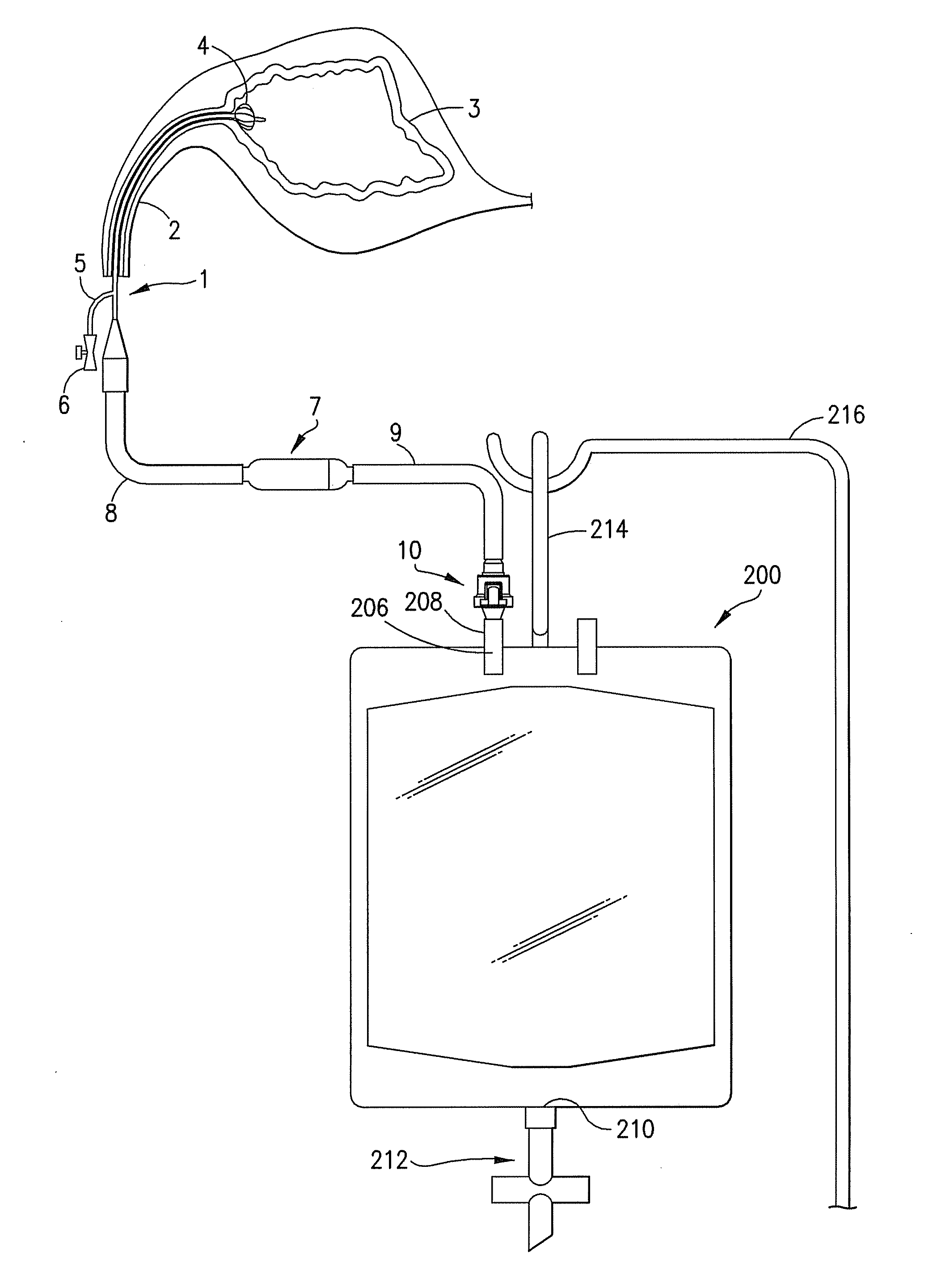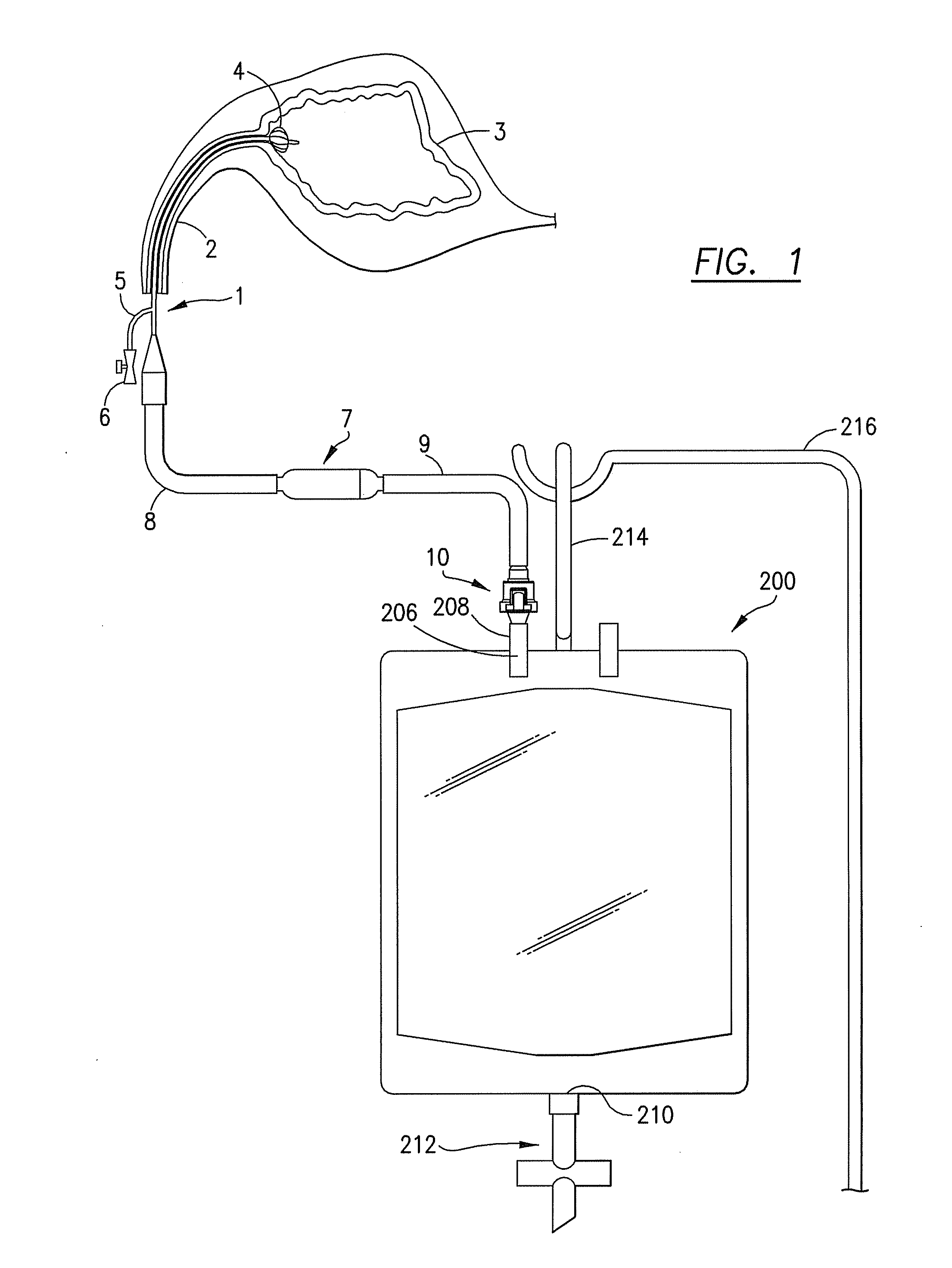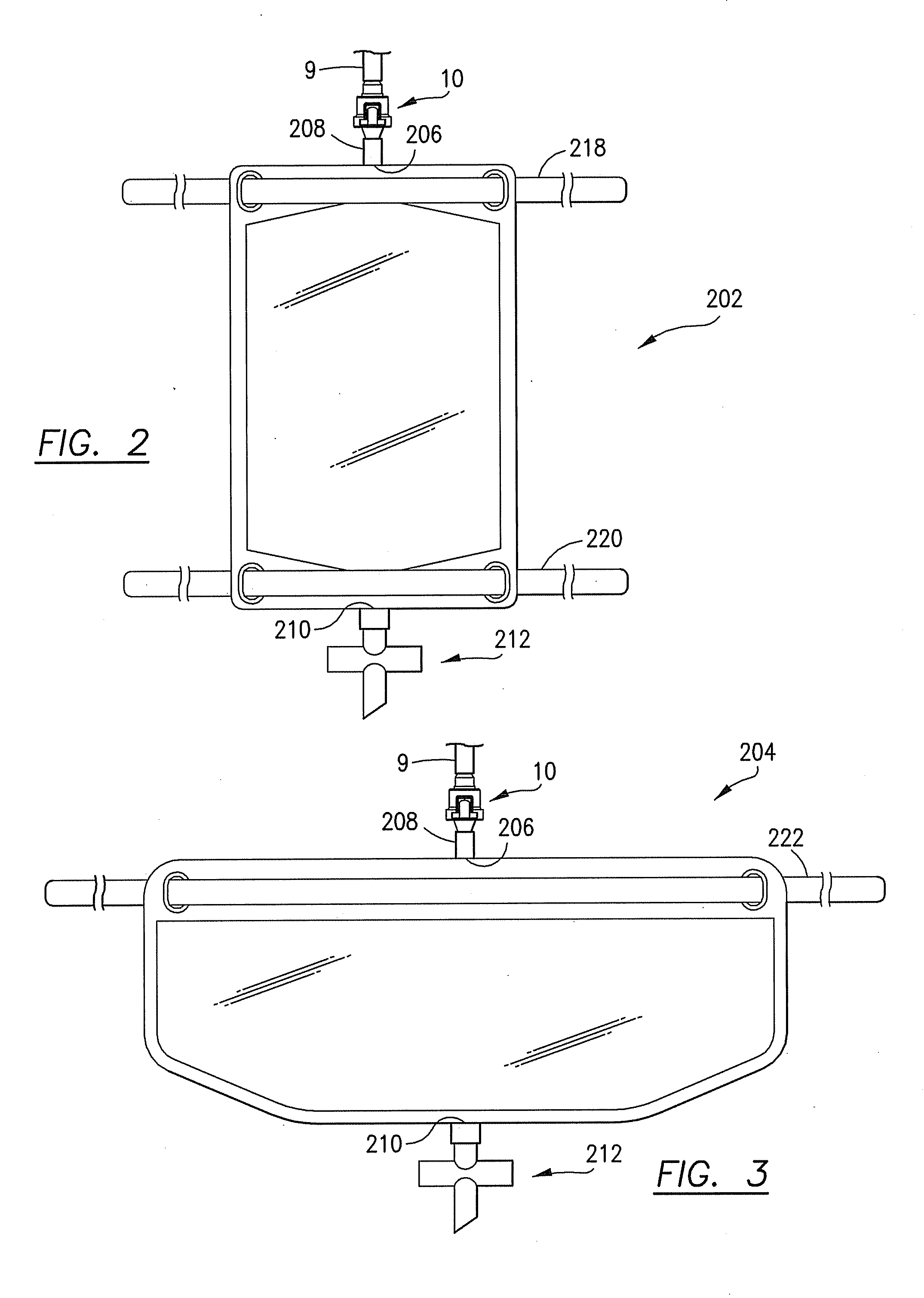Fluid collection system
a collection system and fluid technology, applied in the field of medical devices, can solve the problems of less than perfect seals, disadvantages and difficulties, and interfere with the normal function of the bladder and the detrusor muscle, and achieve the effects of convenient activation, convenient and quick separation, and enhanced patient safety and comfor
- Summary
- Abstract
- Description
- Claims
- Application Information
AI Technical Summary
Benefits of technology
Problems solved by technology
Method used
Image
Examples
Embodiment Construction
[0023]Referring initially to FIGS. 1-3, the fluid collection system of this invention generally comprises a catheter 1, a magnetic valve 7, a coupler 10 and a collection bag 200. The catheter 1 depicted in FIG. 1 is a conventional Foley catheter which is shown inserted through the urethra 2 into the bladder 3. The catheter 1 includes a balloon-tipped end 4, a balloon fill line 5 and a valve port 6. It should be understood that other indwelling catheters may be employed in the fluid collection system of this invention, including the balloonless catheter described in U.S. Pat. No. 6,855,126 to Flinchbaugh, the disclosure of which is incorporated by reference in its entirety herein.
[0024]The outlet of the catheter 1 is connected by tubing 8 to the inlet of magnetic valve 7. The magnetic valve 7 is preferably of the type described in U.S. Pat. No. 6,673,051 to Flinchbaugh, the disclosure of which is incorporated by reference in its entirety herein. As noted above, the magnetic valve 7 i...
PUM
 Login to View More
Login to View More Abstract
Description
Claims
Application Information
 Login to View More
Login to View More - R&D
- Intellectual Property
- Life Sciences
- Materials
- Tech Scout
- Unparalleled Data Quality
- Higher Quality Content
- 60% Fewer Hallucinations
Browse by: Latest US Patents, China's latest patents, Technical Efficacy Thesaurus, Application Domain, Technology Topic, Popular Technical Reports.
© 2025 PatSnap. All rights reserved.Legal|Privacy policy|Modern Slavery Act Transparency Statement|Sitemap|About US| Contact US: help@patsnap.com



